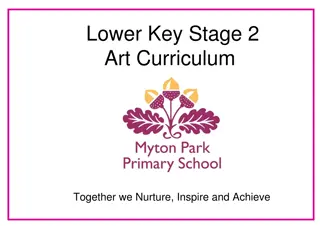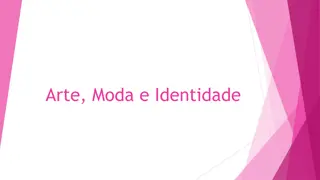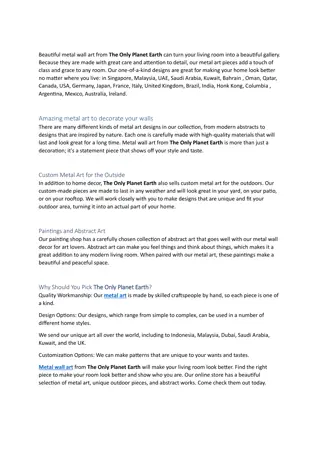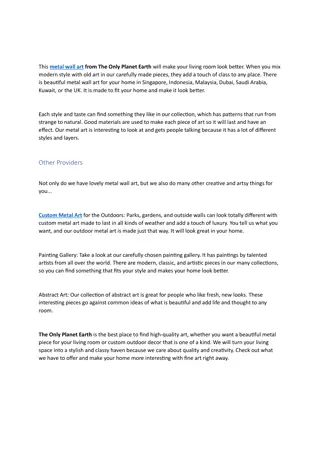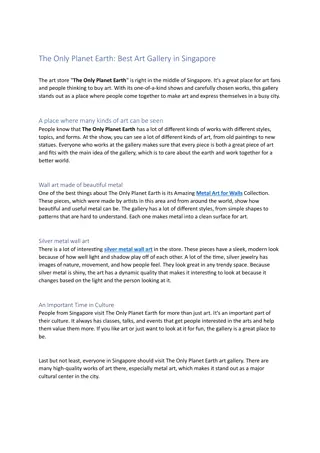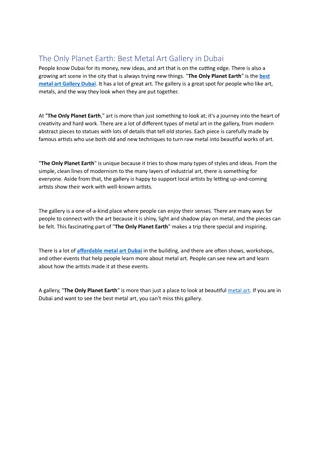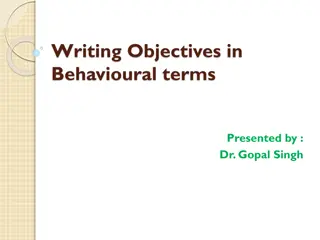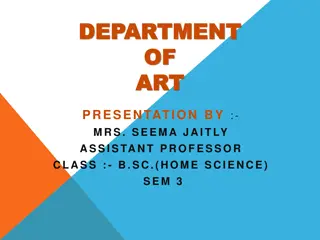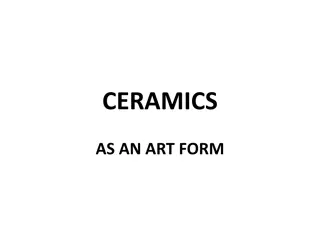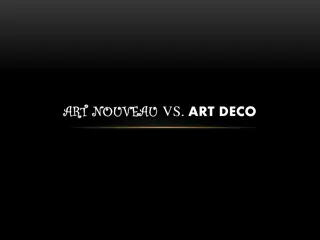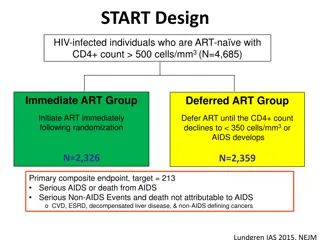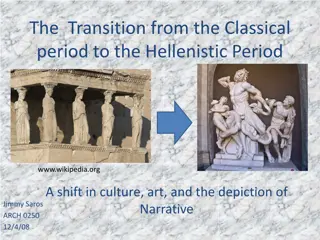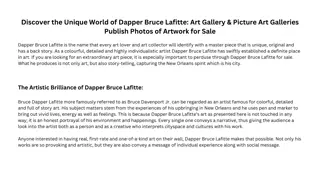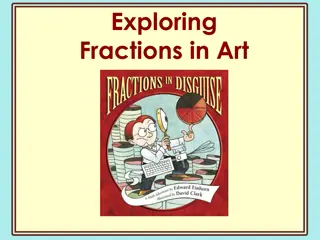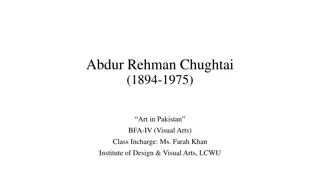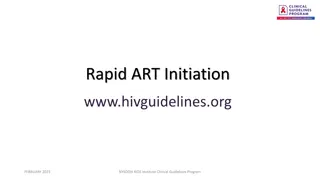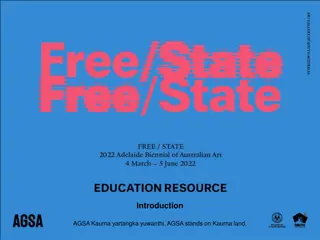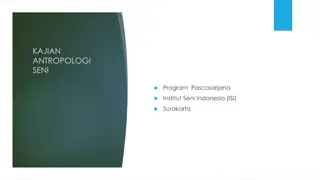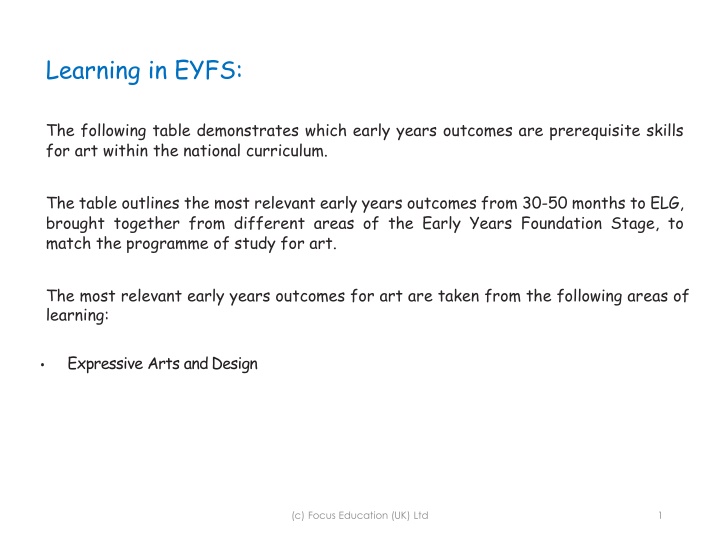
Early Years Outcomes for Art in National Curriculum
Explore the early years outcomes that are essential skills for art in the national curriculum, from 30-50 months to ELG. Discover how children develop their creative expression, use of colors, textures, and materials through different stages. Dive into the key requirements for art and design at Key Stage 1 and Key Stage 2 as per the national curriculum guidelines.
Download Presentation

Please find below an Image/Link to download the presentation.
The content on the website is provided AS IS for your information and personal use only. It may not be sold, licensed, or shared on other websites without obtaining consent from the author. If you encounter any issues during the download, it is possible that the publisher has removed the file from their server.
You are allowed to download the files provided on this website for personal or commercial use, subject to the condition that they are used lawfully. All files are the property of their respective owners.
The content on the website is provided AS IS for your information and personal use only. It may not be sold, licensed, or shared on other websites without obtaining consent from the author.
E N D
Presentation Transcript
Learning in EYFS: The following table demonstrates which early years outcomes are prerequisite skills for art within the national curriculum. The table outlines the most relevant early years outcomes from 30-50 months to ELG, brought together from different areas of the Early Years Foundation Stage, to match the programme of study for art. The most relevant early years outcomes for art are taken from the following areas of learning: Expressive Arts and Design (c) Focus Education (UK) Ltd 1
Art 30-50 Months Expressive Arts and Design Exploring and Using Media and Materials To explore colour and how colours can be changed. To understand that they can use lines to enclose a space and then begin to use these shapes to represent objects. To begin to be interested in and describe the texture of things. To develop a preference for forms of expression. Being Imaginative To notice what adults do, imitating what is observed and then doing it spontaneously when the adult is not there. To capture experiences and responses with a range of media, such as music, dance and paint and other materials or words. 40-60 Months Expressive Arts and Design To explore what happens when they mix colours. Exploring and Using Media and Materials To experiment to create different textures. To understand that different media can be combined to create new effects. To manipulate materials to achieve a planned effect. To construct with a purpose in mind, using a variety of resources. To use simple tools and techniques competently and appropriately. To select the appropriate resources and adapt work where necessary. To select tools and techniques needed to shape, assemble and join materials they are using. Being Imaginative To create simple representations of events, people and objects. To choose particular colours to use for a purpose. ELG Expressive Arts and Design Exploring and Using Media and Materials To safely use and explore a variety of materials, tools and techniques, experimenting with colour, design, texture, form and function. Being Imaginative To use what they have learnt about media and materials in original ways, thinking about uses and purposes. They represent their own ideas, thoughts and feelings through design and technology, art, music, dance, role play and stories. (c) Focus Education (UK) Ltd 2
What the national curriculum requires in art and design at key stage 1 and key stage 2 Pupils should be taught: to use a range of materials creatively to design and make products to use drawing, painting and sculpture to develop and share their ideas, experiences and imagination to develop a wide range of art and design techniques in using colour, pattern, texture, line, shape, form and space about the work of a range of artists, craft makers and designers, describing the differences and similarities between different practices and disciplines, and making links to their own work. Key Stage 1 Pupils should be taught to develop their techniques, including their control and their use of materials, with creativity, experimentation and an increasing awareness of different kinds of art, craft and design. Pupils should be taught: to create sketch books to record their observations and use them to review and revisit ideas to improve their mastery of art and design techniques, including drawing, painting and sculpture with a range of materials [for example, pencil, charcoal, paint, clay] about great artists, architects and designers in history. Key Stage 2 (c) Focus Education (UK) Ltd 3
Knowledge, Skills and Understanding breakdown for Art Year 1 Drawing Painting Printing Textiles Can they print with sponges, vegetables and fruit? Can they print onto paper and textile? Can they design their own printing block? Can they create a repeating pattern? Can they sort threads and fabrics? Can they group fabrics and threads by colour and texture? Can they weave with fabric and thread? Can they communicate something about themselves in their drawing? Can they create moods in their drawings? Can they draw using pencil and crayons? Can they draw lines of different shapes and thickness, using 2 different grades of pencil? Can they communicate something about themselves in their painting? Can they create moods in their paintings? Can they choose to use thick and thin brushes as appropriate? Can they paint a picture of something they can see? Can they name the primary and secondary colours? 3D Collage Use of IT Knowledge Can they add texture by using tools? Can they make different kinds of shapes? Can they cut, roll and coil materials such as clay, dough or plasticine? Can they cut and tear paper and card for their collages? Can they gather and sort the materials they will need? Can they use a simple painting program to create a picture? Can they use tools like fill and brushes in a painting package? Can they go back and change their picture? Can they describe what they can see and like in the work of another artist? Can they ask sensible questions about a piece of art? (c) Focus Education (UK) Ltd 4
Knowledge, Skills and Understanding breakdown for Art Year 2 Drawing Painting Printing Sketch books Can they mix paint to create all the secondary colours? Can they mix and match colours, predict outcomes? Can they mix their own brown? Can they make tints by adding white? Can they make tones by adding black? Can they create a print using pressing, rolling, rubbing and stamping? Can they create a print like a designer? Can they begin to demonstrate their ideas through photographs and in their sketch books? Can they set out their ideas, using annotation in their sketch books? Do they keep notes in their sketch books as to how they have changed their work? Can they use three different grades of pencil in their drawing (4B, 8B, HB)? Can they use charcoal, pencil and pastels? Can they create different tones using light and dark? Can they show patterns and texture in their drawings? Can they use a viewfinder to focus on a specific part of an artefact before drawing it? 3D/ Textiles Collage Use of IT Knowledge Can they make a clay pot? Can they join two finger pots together? Can they add line and shape to their work? Can they join fabric using glue? Can they sew fabrics together? Can they create part of a class patchwork? Can they create individual and group collages? Can they use different kinds of materials on their collage and explain why they have chosen them? Can they use repeated patterns in their collage? Can they create a picture independently? Can they use simple IT mark- making tools, e.g. brush and pen tools? Can they edit their own work? Can they take different photographs of themselves displaying different moods? Can they change their photographic images on a computer? Can they link colours to natural and man-made objects? Can they say how other artists have used colour, pattern and shape? Can they create a piece of work in response to another artist s work? (c) Focus Education (UK) Ltd 5
Knowledge, Skills and Understanding breakdown for Art Year 3 Drawing Painting Printing Sketch books Can they predict with accuracy the colours that they mix? Do they know where each of the primary and secondary colours sits on the colour wheel? Can they create a background using a wash? Can they use a range of brushes to create different effects? Can they make a printing block? Can they make a 2 colour print? Can they use their sketch books to express feelings about a subject and to describe likes and dislikes? Can they make notes in their sketch books about techniques used by artists? Can they suggest improvements to their work by keeping notes in their sketch books? Can they show facial expressions in their drawings? Can they use their sketches to produce a final piece of work? Can they write an explanation of their sketch in notes? Can they use different grades of pencil shade, to show different tones and texture? 3D/ Textiles Collage Use of IT Knowledge Can they add onto their work to create texture and shape? Can they work with life size materials? Can they create pop-ups? Can they use more than one type of stitch? Can they join fabric together to form a quilt using padding? Can they use sewing to add detail to a piece of work? Can they add texture to a piece of work? Can they cut very accurately? Can they overlap materials? Can they experiment using different colours? Can they use mosaic? Can they use montage? Can they use the printed images they take with a digital camera and combine them with other media to produce art work? Can they use IT programs to create a piece of work that includes their own work and that of others (using web)? Can they use the internet to research an artists or style of art? Can they compare the work of different artists? Can they explore work from other cultures? Can they explore work from other periods of time? Are they beginning to understand the viewpoints of others by looking at images of people and understand how they are feeling and what the artist is trying to express in their work? (c) Focus Education (UK) Ltd 6
Knowledge, Skills and Understanding breakdown for Art Year 4 Drawing Painting Printing Sketch books Can they create all the colours they need? Can they create mood in their paintings? Do they successfully use shading to create mood and feeling? Can they print using at least four colours? Can they create an accurate print design? Can they print onto different materials? Can they begin to show facial expressions and body language in their sketches? Can they identify and draw simple objects, and use marks and lines to produce texture? Can they organise line, tone, shape and colour to represent figures and forms in movement? Can they show reflections? Can they explain why they have chosen specific materials to draw with? Can they use their sketch books to express their feelings about various subjects and outline likes and dislikes? Can they produce a montage all about themselves? Do they use their sketch books to adapt and improve their original ideas? Do they keep notes about the purpose of their work in their sketch books? 3D/ Textiles Collage Use of IT Knowledge Can they use ceramic mosaic to produce a piece of art? Can they combine visual and tactile qualities? Can they present a collection of their work on a slide show? Can they create a piece of art work which includes the integration of digital images they have taken? Can they combine graphics and text based on their research? Can they experiment with different styles which artists have used? Can they explain art from other periods of history? Do they experiment with and combine materials and processes to design and make 3D form? Can they begin to sculpt clay and other mouldable materials? Can they use early textile and sewing skills as part of a project? (c) Focus Education (UK) Ltd 7
Knowledge, Skills and Understanding breakdown for Art Year 5 Drawing Painting Printing Sketch books Can they identify and draw simple objects, and use marks and lines to produce texture? Do they successfully use shading to create mood and feeling? Can they organise line, tone, shape and colour to represent figures and forms in movement? Can they show reflections? Can they explain why they have chosen specific materials to draw with? Can they create all the colours they need? Can they create mood in their paintings? Can they express their emotions accurately through their painting and sketches? Can they print using a number of colours? Can they create an accurate print design that meets a given criteria? Can they print onto different materials? Do they keep notes in their sketch books as to how they might develop their work further? Do they use their sketch books to compare and discuss ideas with others? 3D/ Textiles Collage Use of IT Knowledge Can they use ceramic mosaic to produce a piece of art? Can they combine visual and tactile qualities? Can they experiment with different styles that artists have used? Do they learn about the work of others by looking at artists work in books, the internet, visits to galleries and other sources of information? Can they create a piece of art work which includes the integration of digital images they have taken? Can they combine graphics and text based on their research? Can they scan images and take digital photos, and use software to alter them, adapt them and create work with meaning. Can they create digital images with animation, video and sound to communicate their ideas. Do they experiment with and combine materials and processes to design and make 3D form? Can they sculpt clay and other mouldable materials? Can they use textile and sewing skills as part of a project, e.g. hanging, textile book, etc.? This could include running stitch, cross stitch, backstitch, appliqu and/or embroidery. (c) Focus Education (UK) Ltd 8
Knowledge, Skills and Understanding breakdown for Art Year 6 Drawing Painting Printing Sketch books Do their sketches communicate emotions and a sense of self with accuracy and imagination? Can they explain why they have combined different tools to create their drawings? Can they explain why they have chosen specific drawing techniques? Can they explain what their own style is? Can they use a wide range of techniques in their work? Can they explain why they have chosen specific painting techniques? Can they overprint using different colours? Do they look very carefully at the methods they use and make decisions about the effectiveness of their printing methods? Do their sketch books contain detailed notes and quotes explaining about items? Do they compare their methods to those of others and keep notes in their sketch books? Do they combine graphics and text based research of commercial design, e.g. magazines etc., to influence the layout of their sketch books? Do they adapt and refine their work to reflect its meaning and purpose, keeping notes and annotations in their sketch books? 3D/ Textiles Collage Use of IT Knowledge Can they create models on a range of scales? Can they create work which is open to interpretation by the audience? Can they include both visual and tactile elements in their work? Can they justify the materials they have chosen? Can they combine pattern, tone and shape? Do they use software packages to create pieces of digital art? Can they create a piece of art which can be used as part of a wider presentation? Can they make a record about the styles and qualities in their work? Can they say what their work is influenced by? Can they include technical aspects in their work, e.g. architectural design? (c) Focus Education (UK) Ltd 9

